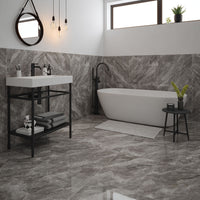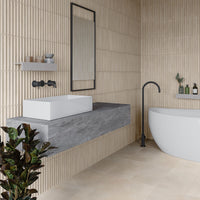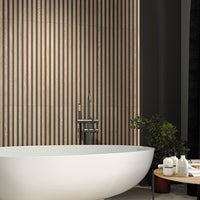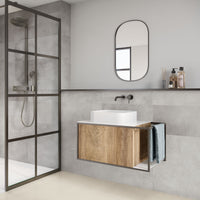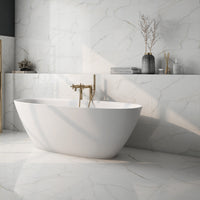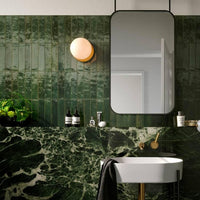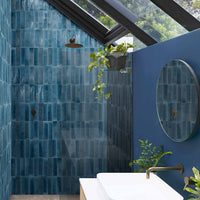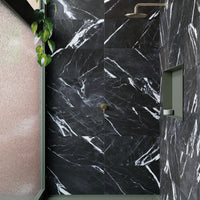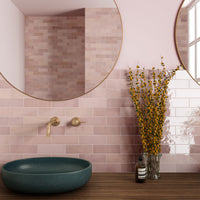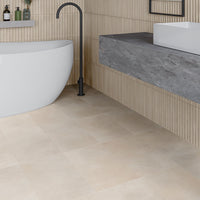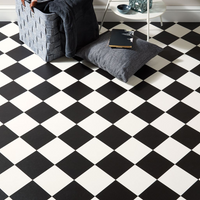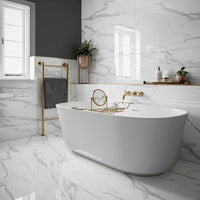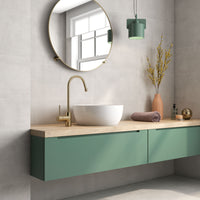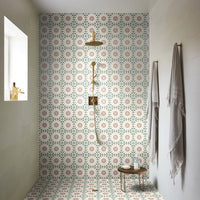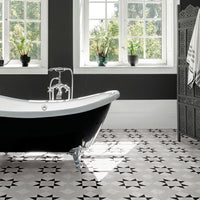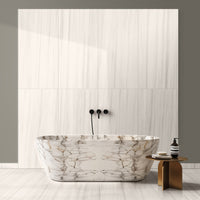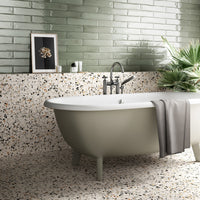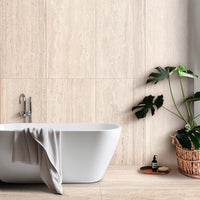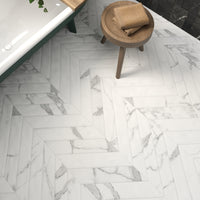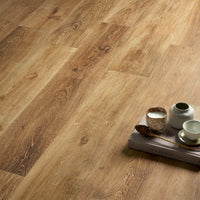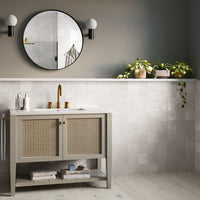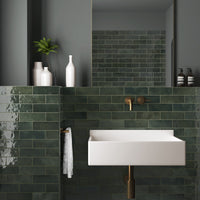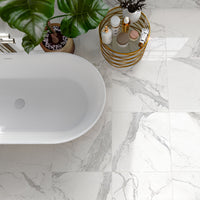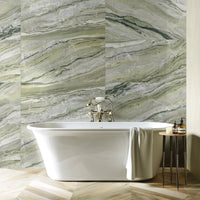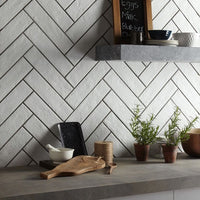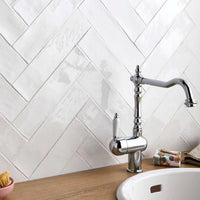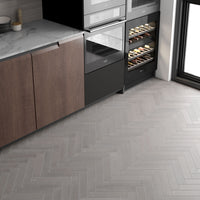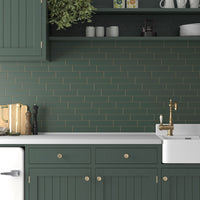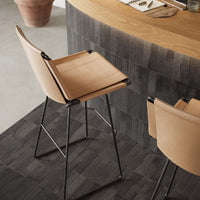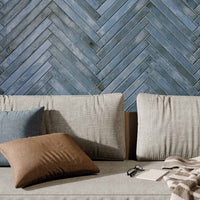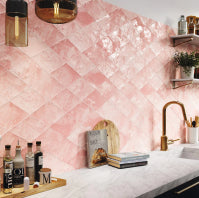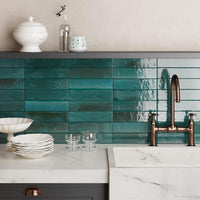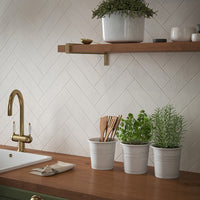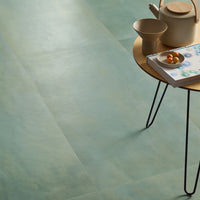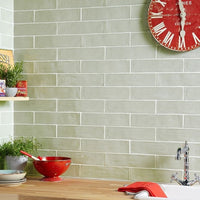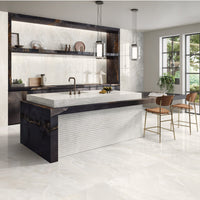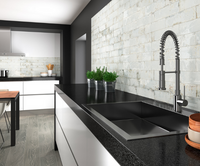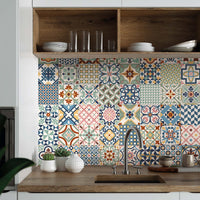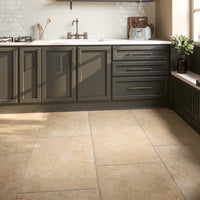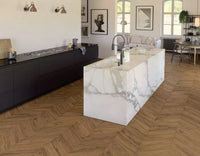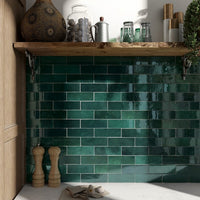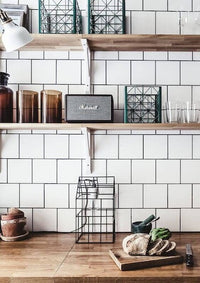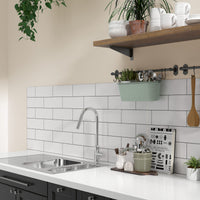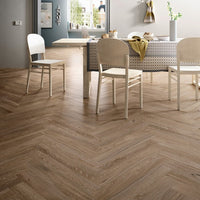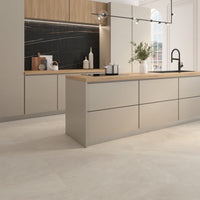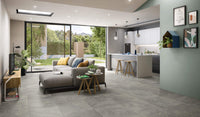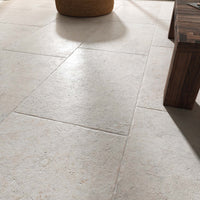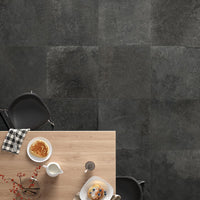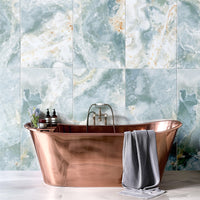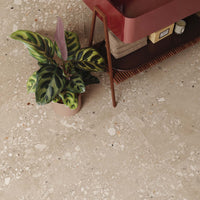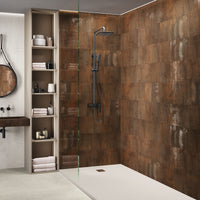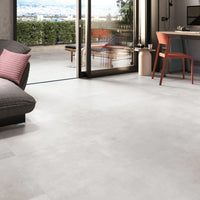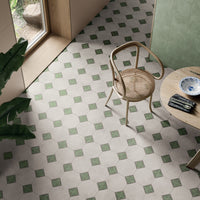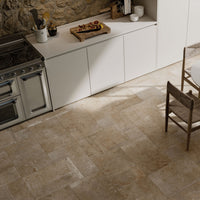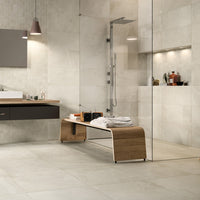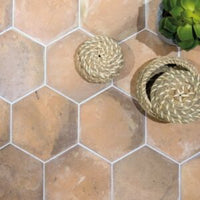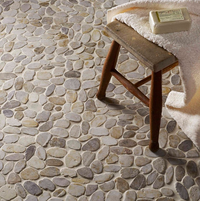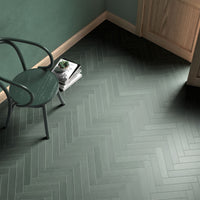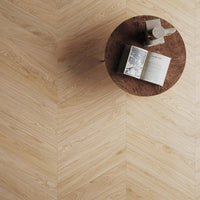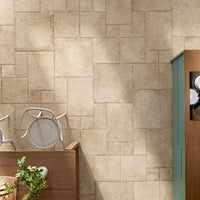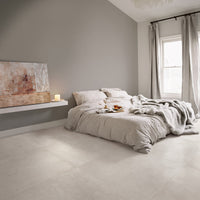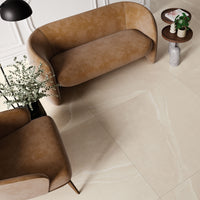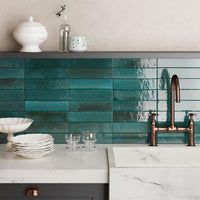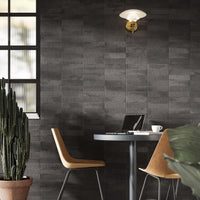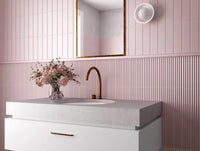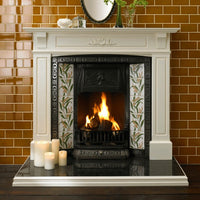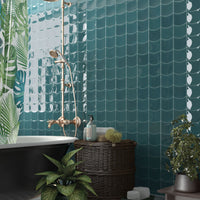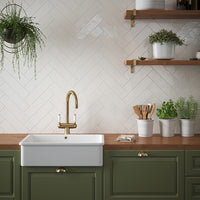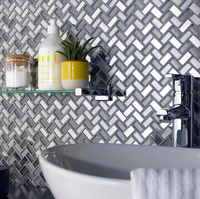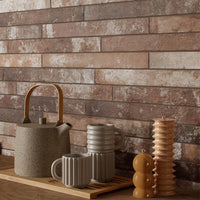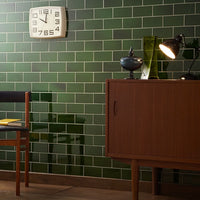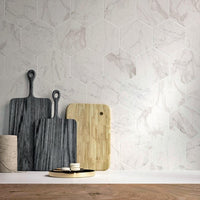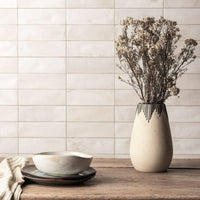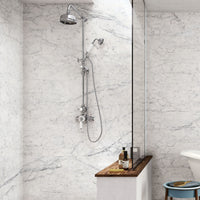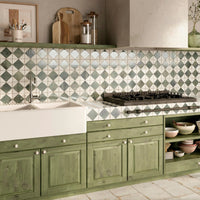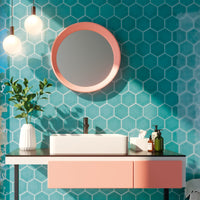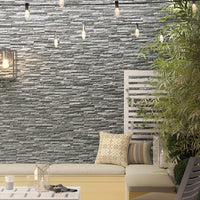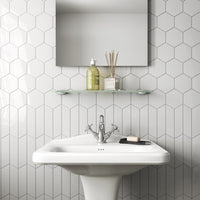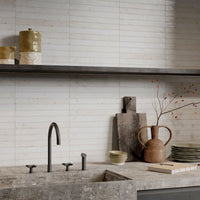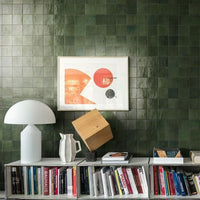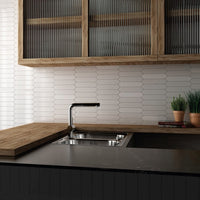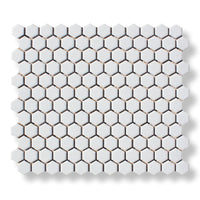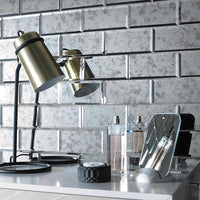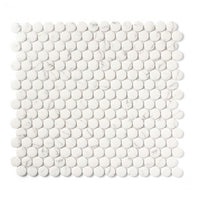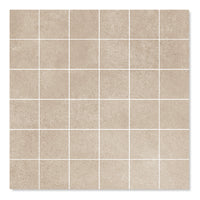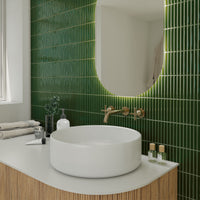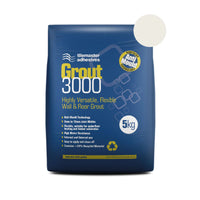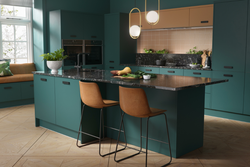Zellige tiles are everywhere these days - and with good reason. Full of life and soul, they look incredible and never go out of fashion. In this article, we’ll look at what they are, where you can use them and answer a whole host of other questions you may have.
What are zellige tiles?
Even if you don’t know what zellige tiles are, it’s likely you’re already familiar with them. They’re the colourful tiles found throughout Morocco, northern Africa and parts of southern Spain - including the Alhambra Palace in Granada, as shown below.

Irregular, imperfect and often heavily varied, they’re full of character or rustic soul. Little wonder, then, that they’re so loved by interior designers and those in the know - these days, you’ll find zellige tiles anywhere from trendy apartments to the latest boutique hideaway.
How are zellige tiles made?
Traditional zellige tiles are still made by hand in Morocco by master craftsmen, following a process that’s virtually unchanged for centuries.
-
First, water and clay are mixed together into a paste, which is then pressed into a mould and left to dry in the sun.
-
This clay mixture is then fired in a kiln, to remove any moisture and leave a hard biscuit.
-
This is then glazed and fired again, at a hotter temperature than before.
There's lots of scope for variation and imperfections - even the placement of the tiles in the kiln can affect their final appearance!
And while handmade zellige tiles are undoubtedly beautiful, they do come with a number of downsides. Firstly, as they're so laborious to produce, they come with a hefty price tag. And secondly, they're usually produced to order by small ateliers in the Moroccan city of Fez, so they're not exactly easy to buy. And that's before we get on to any specifics around installation, which we'll look at below...
But luckily, we have a great range of zellige-inspired tiles that will give you the same beautiful style, without any of the drawbacks.
The benefits of our zellige tiles
Although they look authentic, our zellige tiles are actually made in Spanish and Italian factories. This means you get the best of both worlds - modern tiles that are full of olde-world charm. Let’s take a closer look at some of the benefits:
-
Easy to install. Made from ceramic and porcelain, our zellige tiles can be fixed by your normal tiler - or even yourself. On the other hand, authentic zellige tiles are notoriously tricky to fit and should only be installed by a professional with plenty of previous experience.
-
Affordable. Our zellige tiles are affordable and ready for immediate delivery. This compares extremely well to the Moroccan originals, which are often only available at sky-high prices and months-long leadtimes.
-
Durable. As they're made from modern materials, our zellige tiles are extremely easy to live with and care for, with fuss-free wipe-clean surfaces. Traditional zellige tiles can easily stain, as the glaze is often porous.
-
Consistent. While some of our zellige tiles have deliberate wavy edges, their thickness is always consistent. Not only does this help with installation, it also means you'll get a nice flat finish - so there's no chance of snagging fabric!
Where can you use zellige tiles?
Zellige tiles aren’t just about enduring looks. Incredibly versatile, they will compliment any interior style and look just as great in a modern property as in a rustic abode. You can lay them anywhere you'd normally use wall tiles, including:
- Bathroom and kitchen splashbacks
- Shower walls
- Fireplaces and chimney breasts
- Feature walls
- Outdoor walls

Some zellige tiles can also be laid on floors. You'll need to make sure that the tile is sturdy enough to withstand daily footfall and won't scratch easily - our Souk Emerald tiles are a great example.
How to install zellige tiles
One of the advantages of our zellige tiles is how straightforward they are to install. They’re made from ceramic, so a professional tiler will have no problem fitting them to your walls. And if you’re looking to tile yourself, then worry not - our handy guide covers all the basics.
However, when it comes to authentic zellige tiles, things get tricker. We recommend that they're only installed by a professional with plenty of experience fixing handmade tiles. There's a few rules to bear in mind:
-
Authentic zellige tiles are pretty unforgiving, so make sure your wall is as flat as possible. Even so, you're unlikely to get a perfectly even finish. That's the beauty of zellige!
-
It's best practice to dry lay all of your tiles before installation. There's likely to be plenty of variation in shade and size, so mix and match from different boxes until you're completely happy with the result.
-
Give your tiles a thorough clean before installing - they're likely to be coated in dust.
-
Real zellige tiles should be laid edge-to-edge using wedges instead of tile spacers. The grout joint is likely to be inconsistent - this is part and parcel of handmade tiles!
-
Speaking of edges... you might want to sand any sharp edges down, before they're installed. Yes, really! Otherwise they're likely to catch fabric and make cleaning that little bit harder.
-
Once your tiles have been installed, they'll probably need to be sealed. Unless, of course, they're our zellige look-a-likes...
And a final tip - order at least 15% more than you'll need. Due to the inconsistent nature of zellige, there's always more wastage and tiles that aren't quite right.
Caring for zellige tiles
Zellige tiles - whether they’re from our collection or Morocco - are relatively easy to care for, especially when they’re fitted to walls. Simply wipe them down on a regular basis with a damp cloth and steer clear of harsh chemicals or abrasive cleaners, which can damage the glaze.
Do I need to seal zellige tiles?
While our ceramic and porcelain imitations don't need to be sealed, it's likely that original zellige tiles need to be protected against water ingress. Otherwise, they will quickly stain and lose their beautiful lustre.
What grout colour should I use with zellige tiles?
While we normally love a contrasting grout, it's fair to say that zellige tiles should be the star of your show. So choose a grout colour that blends in with your tiles, allowing their beautiful colouring to stand out proud.
Which floor tiles should I use with zellige tiles?
Wherever you lay your zellige tiles, they're sure to catch the eye. So with that in mind, it makes sense to keep your floors calm and simple - neutral tiles or pale wood planks are the order of the day.
We've covered a lot of information here, but just get in touch if you have any further questions. We'd love to help!
And don't forget - if you're looking for new zellige tiles, why not check out our range and order some completely free samples today?
